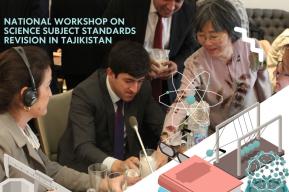Article
Hungary: Strategy for Lifelong Learning, issued in 2006

Rationale of the strategy
The aim of the Hungarian lifelong learning strategy is to outline the policy guidelines and the practical work to be performed to this end. Based on this strategy, education, training and certification systems will become capable of ensuring adequate foundations and providing everyone with an opportunity for continuous competency development. The Hungarian strategy intends to create a link between initial and post-initial phases of education. Within this context, it focuses on questions of equal access to public educational institutions as well as on providing a second chance for drop-outs. It encourages work-based learning and offers a smoother transition from school to adult life by combining education and employment, and thus brings flexibility to pathways. Moreover, it prioritizes lifelong guidance and counselling and emphasizes their importance in the early phase of school education. Lastly, a great part of the strategy deals with the evaluation of outcomes of formal and informal learning.
Concept of lifelong learning
The Hungarian lifelong learning paradigm is based on the premise that in a competitive knowledge-based society and economy, there is an increasing demand for the institutional systems that assist learning and the dissemination of knowledge to be adjusted to individual and community expectations. Lifelong learning means that individuals can take up learning at any stage in their lives, that they can take up any form of learning, and that there is constant motivation to learn in a knowledge-based society.
Main challenges
The following weaknesses of lifelong learning in Hungary are stated in the strategy:
- Absence of a coherent institutional system and lack of legal and financial stability
- Insufficient level of basic skills, labour-market skills and social competences in Hungary’s workforce
- Low number of participants in adult education compared to the EU
- Poor participation of the formal education and training systems in lifelong learning
- Low participation in university natural sciences, engineering and PhD programmes
- High rates of early school leaving (particularly in specialized secondary schools)
- Weak institutional cooperation between the formal education system and the labour market
- Insufficient cooperation between actors at a regional level
- Absence of a modern, nationwide measurement, assessment and career monitoring system
- Relatively low participation of businesses and individuals in financing the costs of lifelong learning
Main targets and measures
The strategy follows a ‘from cradle to grave’ approach that includes all life stages, from early socialization and pre-school education to retirement age. The following areas of intervention are distinguished:
- Developing basic skills and key competences in public education: improving the standards of school preparation, transforming secondary education
- Creating a diverse and abundant range of opportunities in vocational education, higher education and adult learning: modernizing the institutional network of training, implementing the Bologna Process, developing formal adult education in higher education institutions
- Extending learning opportunities: using information and communication technologies, enhancing learning in the workplace, developing distance learning
- Career guidance, counselling and monitoring: establishing an information and counselling system of nationwide scope, measuring the success of school leavers in the labour market and feeding the results back to training institutions
- Recognition of informal and non-formal learning: joining the Europass system, building a single system of validation
- Supporting disadvantaged groups and groups at risk in the labour market: preventing early school leaving, rethinking social assistance and creating an environment that encourages the combination of learning and work
- Establishment of a new teaching and learning culture: enhancing teachers’ capacity for self-reflectivity, providing teacher training, building a national assessment and evaluation system in public education
Particular feature of the strategy
The strategy includes an extensive description of the Hungarian lifelong learning paradigm:
- From cradle to grave: lifelong learning encompasses the entire lifecycle of the individual
- Learning for all: e.g. through targeted programmes that offer another chance for drop-outs
- Diverse learning objectives: learning is not only a tool for finding and keeping the appropriate job; it also affects several other dimensions of an individual’s quality of life
- Emphasis on the development of competences: social competences enable people and communities to retain their integrity in a permanently changing environment
- Schools can also build on out-of-school knowledge: formal, non-formal and informal learning
- New learning culture: through appropriate teaching and learning methods and tools, the motivation to learn can be increased and learning can become a rewarding activity
- Integrating the different forms and levels of learning, education and training into a single system
Stakeholders involved in the development of the strategy
Further readings and web links
- Hungary. 2005. Strategy of the Government of the Republic of Hungary for Lifelong Learning
- Hungary. 2008. Development and State of the Art of Adult Learning and Education
Issuing Body
Ministry of Education










